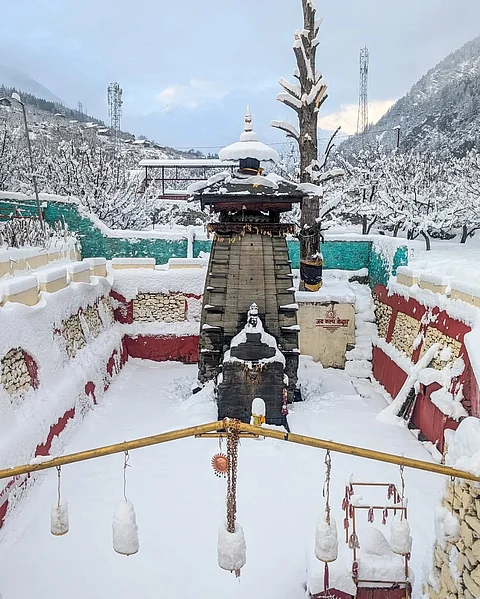
- Destinations
- Experiences
- Stay
- What's new
- Celebrating People
- Responsible Tourism
- CampaignsCampaigns
- Subscribe
- Buy Now

Early this August, a devastating flash flood took over Uttarakshi, Uttarakhand, and wiped away homes, orchards and centuries of heritage, among other things. Among the losses was the fabled Kalp Kedar temple near Dharali, a Shiva shrine that was steeped in legend and believed to date back to the Mahabharata era. The temple's disappearance has left locals and pilgrims grappling with the loss of both a sacred site and a living symbol of their cultural identity.
The Kheer Gad (also known as the Kheer Ganga) stream in Dharali, a village in the Gangotri valley roughly six km from Harsil, saw a devastating flood early this August as a result of heavy rains. Large portions of the settlement were washed away by the surge, which may have been caused by a cloudburst or a glacial lake outburst. Access to the impacted area was made extremely difficult by landslides, broken bridges, and obstructed roads, which hindered rescue attempts.
The catastrophe uprooted entire families, left numerous people missing, and took a number of lives. The final visible piece of the Kalp Kedar temple was buried beneath layers of rock, dirt, and rubble in the middle of this human catastrophe. This dome had been the sole visible sign of a shrine that was otherwise underground for many years. Since it is no longer there, the temple's actual existence has essentially disappeared.
Kalp Kedar was an ancient Shiva temple located in Dharali, near Harsil in Uttarkashi district. Locals believe it was built by the Pandavas during their exile. For many years, only the domed top—carved with the face of Kalabhairava—was visible, after a glacial shift in the early 1900s submerged the rest of the structure underground. Even excavation attempts in the 1980s failed to reveal the temple’s hidden Shivling.
In early August 2025, a sudden flash flood caused by a cloudburst or similar event triggered a violent surge in the Kheer Gad river. The flood swept through Dharali, sweeping away homes, orchards, and ultimately burying the last visible remains of the temple—the dome—beneath mud, rocks, and debris. Locals mourned not just the physical loss but what they described as the loss of the village's spiritual heart.
For the residents of Dharali and the broader Gangotri valley, Kalp Kedar was more than a religious monument — it was a centre of community identity and spiritual continuity. Pilgrims visiting Gangotri or undertaking treks to higher Panch Kedar shrines often stopped here, combining the visit with darshan at local temples along the Bhagirathi. Rituals, particularly during the month of Shrawan, brought steady streams of devotees, and the site remained a quiet yet significant node in the Himalayan pilgrimage network.
Its disappearance has been described by locals as not merely the loss of a structure but the severing of a sacred bond. The inability to even glimpse the temple’s dome — the last surviving visible feature — has deepened the sense of mourning.
The loss of Kalp Kedar is a stark reminder of the fragility of Himalayan heritage in the face of increasingly frequent extreme weather events. Rising temperatures, glacial instability, and intense monsoon patterns are placing both human settlements and cultural landmarks at risk.
Whether Kalp Kedar can ever be recovered remains uncertain. For now, it exists in the collective memory of the villagers, in oral traditions of the Pandavas’ journey, and in the spiritual map of devotees who once stood before its hidden sanctum.
(With inputs from various sources.)
